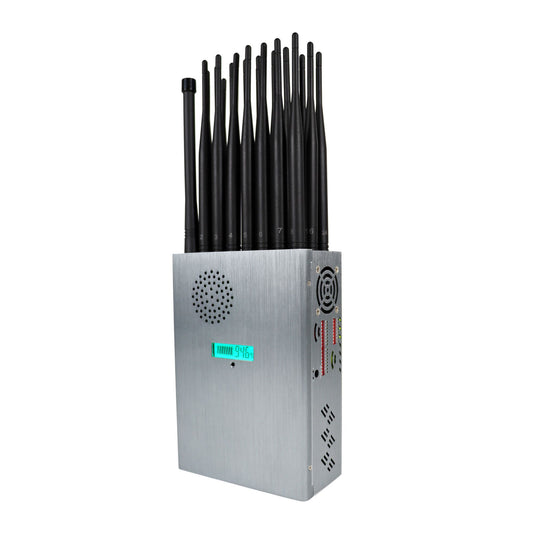Which frequency bands should be added when the mobile phone signal interference system is upgraded to 5G?
It has been several years since we entered the 5G era. Customers who installed mobile phone signal jamming systems a few years ago are beginning to face a problem: Should we directly buy new devices with 5G jamming functions? Or upgrade on the basis of the original mobile phone signal interference system? How to choose these two options depends on the customer's investment budget for the project. Relatively speaking, directly buying new interference equipment will definitely pay more procurement costs, while adding 5G function modules to the original old equipment will save money. Then, the question arises: which frequency bands should be added when the mobile phone signal interference system is upgraded to 5G?

The previous shielding equipment without 5G shielding function is usually equipped with 6-8 interference modules, and the frequency band will include at least 800MHz, 900 MHz, 1800/1900 MHz, 2000/2100 MHz, 2300 MHz, 2600 MHz, etc. The mobile phone signal shielding system only needs to completely cover the above-mentioned frequency bands with the shielding signal, and then it can completely shield the 2G, 3G, and 4G signals of mobile phones. So which frequency bands are included in the latest 5G signal frequency bands? In fact, in different countries, the frequency division standards for 5G frequency bands are different. Taking mainland China as an example, the communication frequency bands allocated to 5G in our country are: 700 MHz, 2600 MHz, 3400 MHz, 3500 MHz, 4800 MHz and so on. Among them, the frequency band of 2600 MHz is expanded on the basis of the original 4G frequency band, from 2555-2655 MHz to 2515-2675 MHz.
When the mobile phone signal interference system is upgraded to 5G, it is necessary to supplement these 5G frequency bands mentioned above. Of course, in the process of actual application, it is not really necessary to increase each frequency band accordingly, such as the frequency band of 4800 MHz. Since this frequency band has very few application scenarios in reality, only a few occasions will use this frequency band. The frequency band is used for private network communication. Therefore, when the upgraded mobile phone signal interferes with 5G, the 4800 MHz frequency band can be directly abandoned.
Based on the above analysis, if you want to upgrade an old mobile phone signal interference system to support 5G standard, the newly added signal shielding module should focus on the following frequency bands: 700 MHz module, 2600 MHz module, 3400 MHz module and 3500 MHz module Of course, if the customer has a spectrum analyzer or a mobile phone test tool, he can check the mobile phone frequency bands in use in advance, and can determine which frequency bands need to be added according to the final test results.













